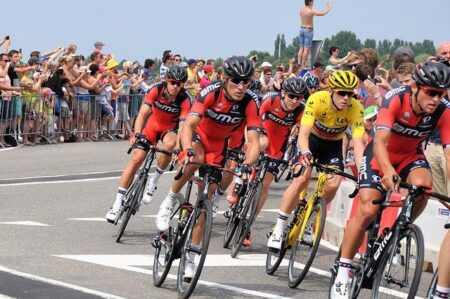The Future Stars: How Rennes Cultivated Talent and Profited Millions
In the ever-evolving landscape of professional football, few clubs have mastered the art of talent identification and player development quite like Stade Rennais. Based in the vibrant city of Rennes, France, this club has consistently scouted and nurtured promising young players, transforming them into invaluable assets worth millions on the global market. As the world watches the rise of football powerhouses, Rennes stands out not just for their competitive spirit but for their strategic foresight in player acquisition and sales. This article delves into the remarkable journey of players nurtured by Rennes who have subsequently been sold for staggering sums, exploring the club’s model for success and what it means for the future of the game.
Rennes’ Scouting Revolution Reshapes Youth Development Pathways
In a decisive shift towards modernizing its youth development strategies, Rennes has pioneered a scouting revolution that is drawing attention across Europe. This proactive approach involves not only identifying talent early but also cultivating young players through innovative training regimens. By adopting data-driven methodologies and comprehensive scouting networks, Rennes has set itself apart, ensuring that emerging talents receive the best possible nurturing. The club’s ability to pinpoint prospects has led to an impressive roster of youth players, many of whom have transitioned into the first team or moved on to lucrative deals elsewhere.
The impact of this scouting overhaul is evident in the impressive financial returns on player sales. Rennes has successfully sold several players for substantial sums, showcasing their investment in youth development:
- Eduardo Camavinga: Sold to Real Madrid for approximately €31 million.
- Ismaïla Sarr: Transferred to Watford for around €30 million.
- Ousmane Dembélé: Moved to Borussia Dortmund for €15 million, before his record transfer to Barcelona.
This strategy not only boosts the club’s coffers but also enhances its reputation as a breeding ground for talent, fundamentally altering the landscape of youth development in football. Rennes’s commitment to harnessing and developing young talent provides a blueprint for other clubs aiming to reshape their scouting frameworks and maximize their youth academies’ potential.
Stars in the Making: Profiles of Rennes’ Most Profitable Transfers
Rennes has proven to be not just a springboard for young talent but also a strategic player in the football market. Over recent seasons, the club has unearthed several gems destined for stardom. These players, once unsung heroes on the pitch, have become household names, bringing in substantial transfer fees that underline Rennes’ savvy approach to talent acquisition and development. Key transfers include:
- Eduardo Camavinga – Sold to Real Madrid for a reported €31 million.
- IsmaĂŻla Sarr – Moved to Watford for around €30 million.
- Romain SaĂŻss – Transferred to Wolverhampton Wanderers, raking in €10 million.
Each of these transfers not only illustrates the club’s ability to spot potential but also highlights their acumen in maximizing financial returns. The strategic sales have allowed Rennes to reinvest in their youth academy and scouting network, further enhancing their reputation for developing stars. Additionally, transfer fees are not just numbers; they reflect the growing influence of Rennes in European football. The table below outlines some of the most significant profit margins achieved during these transfers:
| Player | Original Fee | Sale Price | Profit |
|---|---|---|---|
| Eduardo Camavinga | €10 million | €31 million | €21 million |
| Ismaïla Sarr | €20 million | €30 million | €10 million |
| Romain Saïss | €2 million | €10 million | €8 million |
Analyzing the Financial Impact of Rennes’ Player Sales on Club Revenue
Rennes has strategically navigated the youth market in recent years, transforming promising talents into significant sources of revenue. Player sales have not only bolstered the club’s finances but have also allowed for reinvestment into future prospects. Key sales, such as those of Eduardo Camavinga and IsmaĂŻla Sarr, have had a particularly profound effect, contributing millions to the club’s financial portfolio. This approach emphasizes Rennes’ commitment to developing young players and recognizes the broader trend in modern football where nurturing talent can yield lucrative returns.
The financial figures associated with these player transactions underscore the club’s effective management strategy. For example, the sale of Camavinga to Real Madrid for a remarkable €31 million generated a substantial boost in revenue. Here’s a quick overview of some significant sales and their financial impact:
| Player | Transfer Fee | Year |
|---|---|---|
| Eduardo Camavinga | €31 million | 2021 |
| Ismaïla Sarr | €26 million | 2019 |
| Olivier Ntcham | €14 million | 2017 |
The continuous influx of cash through player sales reinforces Rennes’ ability to compete at higher levels while maintaining a focus on youth development. This model not only reflects a successful financial strategy but also highlights the club’s capacity to identify and cultivate talent that commands high market values. The implications of these sales, along with potential reinvestments in scouting and player development, present an optimistic outlook for Rennes’ future in competitive football.
Future Strategies: How Rennes Can Continue to Identify and Nurture Talent
To sustain its reputation as a breeding ground for future stars, Rennes must invest in both innovative scouting techniques and robust developmental frameworks. Emphasizing the use of data analytics and global scouting networks will enable the club to identify high-potential talent in underrepresented markets. Engaging with local academies and youth clubs will also enhance grassroots connections, allowing Rennes to tap into budding talents before they become household names. The club could implement regular talent identification camps across different regions, exposing scouts to a wider pool of players while building relationships with the community.
Moreover, nurturing these young talents will require a dedicated approach focused on personalized development. Creating a mentorship program that connects young players with seasoned professionals can bridge experience gaps and foster a culture of excellence. Establishing a comprehensive training regimen that includes physical conditioning, psychological support, and tactical education is vital. The implementation of a performance tracking system will also be crucial, assisting coaches in tailoring training interventions based on individual needs and progression. By maintaining a dynamic, adaptive strategy, Rennes can ensure its talent pipeline remains robust and profitable.
Key Takeaways
In conclusion, Rennes has strategically positioned itself as a pivotal player in the global transfer market, constantly unearthing and nurturing young talent. By investing in promising prospects and skillfully navigating the transfer landscape, the club not only secures significant financial returns but also enhances its reputation as a breeding ground for future stars. As the football world continues to evolve, Rennes remains steadfast in its mission, ready to discover and develop the next generation of superstars. With its keen eye for talent, the club is sure to keep football enthusiasts on their toes, eagerly awaiting the next breakout star from Brittany.




